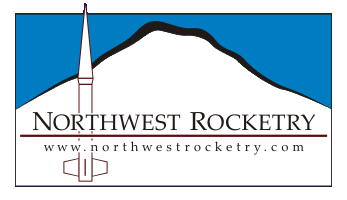 Biography: Schurke, Peter
Biography: Schurke, Peter
Article 1543
By Peter Schurke, November 2009
Peter is a science teacher at Seattle’s Ingraham High School, home of the three-peat Washington State TARC Champions (2007, 2008, 2009), and the 2009 Pacific Northwest Regional TARC Champions. He is the Lead Advisor for the newly established Ingraham Aerospace Sciences Academy (IASA).
Peter built a wide variety of Estes kit rockets as an elementary and middle schooler, then started experimenting with designing his own while in high school. His launch record got a little spotty while in college, then shut down entirely due to lack of funds and time while in graduate school, but he kept and displayed all his venerable old models with every intention of flying them once again once he escaped with his degree. Once he started teaching and had both time and a paycheck, the models came out and the flying started up again.
Peter’s introduction to mid-power flight came in 2006, when a flyer for TARC landed in his mailbox at work. On a whim, he decided to see if there were any kids at Ingraham High School who were interested in building rockets. About a dozen kids showed up and formed a team, and the rest is history. The students went through all kinds of black powder motors before they decided that they needed an Aerotech F20 motor for their TARC rocket that year and Peter got his first whiff of APCP.
It was love at first launch.
The team came very close in 2006-07, but failed to qualify for nationals in their first year, but the seeds were sewn for big things to come. Throughout the process, Peter found that the hardest thing for him was the TARC rule about “No adult interference”…he was definitely going to need to find himself a side project to keep him out of the students’ way….
The second year of the program, Peter and his students decided to delve into the wonderful world of reloadable motors. Once Peter and the students got their hands on an Aerotech catalog and started to see the thrust curves for all those high power motors, he knew what he had to do. During 2007-08, the team qualified for Nationals, finishing a very healthy 29th on their first venture to the Great Meadow.
Meanwhile, to keep himself from meddling with the students and their TARC rocket, Peter started reading up on High Power certification and dreaming about what he wanted to build. In September of 2008, Peter took a small group of IASA students to the BMR Rolling Thunder launch in Dayton, WA—He was packing an overbuilt LOC Vulcanite, and he wasn’t afraid to use it. On his first attempt to get his L1 cert, his parachute stuffed up in the airframe, but the rocket was undamaged, so on his second attempt (using “just a little more…no…a little more than that” BP in his motor charge—just to be sure, you understand) his laundry came out for a successful flight.
Peter spent most of the winter of 2008-09 keeping himself from meddling with his students’ TARC rockets by slowly designing, planning, and constructing his own scratch rocket for his L2. He debuted the 6.5 foot long, 4” diameter vehicle at the WAC Spring Tune-up launch in April of 2009. Inexplicably, he left out the screws to hold the nose cone in place and had to refly his L2 attempt as a result of an unplanned “separate nosecone re-entry”.
Meanwhile, his students were accomplishing great things on their own—qualifying all three TARC teams for Nationals in 2009. At the finals, Team Alpha (the seniors) had a critical pad malfunction that robbed them of altitude and dropped them into 66th place. Team Bravo finished tantalizingly close to the top 20, but came up just short. Team Charlie, the youngest and smallest team, had an amazing day and finished in 7th place overall.
In 2009-10, the IASA boasts four TARC teams, and was selected to participate in NASA’s Student Launch Initiative based on Charlie Team’s finish last year at TARC (see the related article here on the Northwest Rocketry site). Because Peter is allowed to help the students on the SLI project, he has his “thing to keep him distracted so he doesn’t meddle with the TARC teams” for this year all lined up for him.
One of Peter’s proudest accomplishments has been the number of students that he has gotten interested in Science, Technology, Engineering and Math through the rocketry program he started. His program has representation from every racial group in the school, and nearly equal representation from both sexes. His alumni base in the three years since the program started now boasts two aerospace engineering majors, a chemical engineering major, three science majors, a math major, and two students pursuing technical degrees. Five of his students have achieved Level 1 High Power Certification before leaving high school—two of them went on to L2 before graduation! The program has steadily grown: from only a dozen students in 2006 to reaching over forty students today.

